Flying Target Detection Technology Based on GNSS Multipath Signals
Abstract
:1. Introduction
2. Materials and Methods
2.1. Signal Models
2.2. Detection Range
3. Results
3.1. Experiment
- The antenna was set up in an open position facing the zenith direction;
- The IF signal collector and signal-processing host were placed within a certain range of the antenna support;
- The IF signal collector was connected to the PC computer cable, and the GNSS signal-receiving antenna was connected to the IF signal collector through the RF cable;
- The video-recording equipment was set up to record the sky in the zenith direction.
3.2. Analysis of Results
4. Conclusions
Author Contributions
Funding
Institutional Review Board Statement
Informed Consent Statement
Data Availability Statement
Acknowledgments
Conflicts of Interest
References
- Bao, Z.; Xing, M.; Wang, T. Radar Imaging Technology; Electronic Industry Press: Beijing, China, 2005. [Google Scholar]
- Huang, P.; Yin, H.; Xu, X. Radar Target Characteristics; Electronic Industry Press: Beijing, China, 2005. [Google Scholar]
- White, S. Passive Radar. Pract. Wirel. 2021, 97, 14–15. [Google Scholar]
- Yu, Q.; Peng, H.; Sun, Z.; Wu, Y. Target Detection Technology Based on Signals of Multiple Transponders on Broadcasting Satellite. Telecommun. Eng. 2016, 56, 140–144. [Google Scholar]
- Park, G.H.; Kim, H.N. Convolutional Neural Network-based Target Detection Method for Passive Bistatic Radar using FM Broadcasting Signals. J. Inst. Electron. Inf. Eng. 2020, 57, 70–78. [Google Scholar]
- Tang, H.; Wan, X.R.; Chen, W.; Ke, H. Experimentation on Target Detection with Passive Radar Based on Digital Terrestrial Multimedia Broadcasting. J. Electron. Inf. Technol. 2014, 35, 575–580. [Google Scholar] [CrossRef]
- Wang, X.-R. An Overview on Development of Passive Radar Based on the Low Frequency Band Digital Broadcasting and TV Signals. J. Radars 2012, 1, 109–123. [Google Scholar]
- Martin-Neira, M.; Caparrini, M.; Font-Rossello, J.; Lannelongue, S.; Vallmitjana, C.S. The PARIS concept: An experimental demonstration of sea surface altimetry using GPS reflected signals. IEEE Trans. Geosci. Remote Sens. 2001, 39, 142–150. [Google Scholar] [CrossRef]
- Zhang, Y.; Huang, S.; Han, Y.; Yang, S.; Hong, Z.; Ma, D.; Meng, W. Machine learning methods for spaceborne GNSS-R sea surface height measurement from TDS-1. IEEE J. Sel. Top. Appl. Earth Obs. Remote Sens. 2021, 15, 1079–1088. [Google Scholar] [CrossRef]
- Wang, D.; Sun, Y.; Wang, X.; Bai, W.; Du, Q.; Xia, J.; Han, Y. A New GNSS-R Interferometric Ocean Altimetry Using Beidou-3 Signal. Chin. J. Space Sci. 2022, 42, 492–499. [Google Scholar] [CrossRef]
- Bu, J.; Yu, K.; Park, H.; Huang, W.; Han, S.; Yan, Q.; Qian, N.; Lin, Y. Estimation of Swell Height Using Spaceborne GNSS-R Data from Eight CYGNSS Satellites. Remote Sens. 2022, 14, 4634. [Google Scholar] [CrossRef]
- Bu, J.; Yu, K.; Zuo, X.; Ni, J.; Li, Y.; Huang, W. GloWS-Net: A Deep Learning Framework for Retrieving Global Sea Surface Wind Speed Using Spaceborne GNSS-R Data. Remote Sens. 2023, 15, 590. [Google Scholar] [CrossRef]
- Hoseini, M.; Nahavandchi, H. The potential of spaceborne GNSS reflectometry for detecting ocean surface currents. Remote Sens. Environ. 2022, 282, 113256. [Google Scholar] [CrossRef]
- Li, C.; Huang, W. An algorithm for sea-surface wind field retrieval from GNSS-R delay-Doppler map. IEEE Geosci. Remote Sens. Lett. 2014, 11, 2110–2114. [Google Scholar]
- Jing, C.; Niu, X.; Duan, C.; Lu, F.; Di, G.; Yang, X. Sea Surface Wind Speed Retrieval from the First Chinese GNSS-R Mission: Technique and Preliminary Results. Remote Sens. 2019, 11, 3013. [Google Scholar] [CrossRef]
- Kainulainen, J.; Rautiainen, K.; Hallikainen, M.; Takala, M. Radiometric performance of interferometric synthetic aperture radiometer HUT-2D. In Proceedings of the IEEE International Geoscience & Remote Sensing Symposium, Boston, MA, USA, 6–11 July 2008. [Google Scholar]
- Kainulainen, J.; Rautiainen, K.; Lemmetyinen, J.; Hallikainen, M.T.; Martin-Porqueras, F.; Martin-Neira, M. Detection of a sea surface salinity gradient using data sets of airborne synthetic aperture radiometer HUT-2-D and a GNSS-R instrument. IEEE Trans. Geosci. Remote Sens. 2011, 49, 4561–4571. [Google Scholar] [CrossRef]
- Valencia, E.; Camps, A.; Rodriguez-Alvarez, N.; Ramos-Perez, I.; Bosch-Lluis, X.; Park, H. Improving the accuracy of sea surface salinity retrieval using GNSS-R data to correct the sea state effect. Radio Sci. 2011, 46, 1–11. [Google Scholar] [CrossRef]
- Tabibi, S.; Geremia-Nievinski, F.; Francis, O.; van Dam, T. Tidal analysis of GNSS reflectometry applied for coastal sea level sensing in Antarctica and Greenland. Remote Sens. Environ. 2020, 248, 111959. [Google Scholar] [CrossRef]
- Semmling, A.M.; Beyerle, G.; Stosius, R.; Dick, G.; Wickert, J.; Fabra, F.; Cardellach, E.; Ribó, S.; Rius, A.; Helm, A.; et al. Detection of Arctic Ocean tides using interferometric GNSS-R signals. Geophys. Res. Lett. 2011, 38, 6005. [Google Scholar] [CrossRef]
- Ban, W.; Zhang, K.; Yu, K.; Zheng, N.; Chen, S. Detection of red tide over sea surface using GNSS-R spaceborne observations. IEEE Trans. Geosci. Remote Sens. 2022, 60, 5802911. [Google Scholar] [CrossRef]
- Wu, X.; Ma, W.; Xia, J.; Bai, W.; Jin, S.; Calabia, A. Spaceborne GNSS-R Soil Moisture Retrieval: Status, Development Opportunities, and Challenges. Remote Sens. 2021, 13, 45. [Google Scholar] [CrossRef]
- Jia, Y.; Jin, S.; Savi, P.; Yan, Q.; Li, W. Modeling and Theoretical Analysis of GNSS-R Soil Moisture Retrieval Based on the Random Forest and Support Vector Machine Learning Approach. Remote Sens. 2020, 12, 3679. [Google Scholar] [CrossRef]
- Rodriguez-Alvarez, N.; Bosch-Lluis, X.; Camps, A.; Vall-llossera, M.; Valencia, E.; Marchan-Hernandez, J.F.; Ramos-Perez, I. Soil moisture retrieval using GNSS-R techniques: Experimental results over a bare soil field. IEEE Trans. Geosci. Remote Sens. 2009, 47, 3616–3624. [Google Scholar] [CrossRef]
- Zhang, Y.; Gu, W.; Han, Q.; Cao, Y.; Xia, Y.; Wang, Q. Research of dry snow depth detection based on GNSS-R. Electron. Des. Eng. 2015, 11, 64–73. [Google Scholar]
- Rodriguez-Alvarez, N.; Monerris, S.; Bosch-Lluis, X.; Camps, A.; Marchan-Hernandez, J.F.; Ramos-Perez, I.; Valencia, E.; Vall-Llossera, M.; Nieto, J.M. Soil Moisture Retrieval Using GNSS-r: Vegetation Effects; SMOS Barcelona Expert Centre: Passeig Marítim de la Barceloneta, Spain, 2017; pp. 37–49. [Google Scholar]
- Zhang, M.; Zhang, J. A Fast Satellite Selection Algorithm: Beyond Four Satellites. IEEE J. Sel. Top. Signal Process. 2009, 3, 740–747. [Google Scholar] [CrossRef]
- Keshvadi, H.; Broumandan, A.; Lachapelle, G. Spatial Characterization of GNSS Multipath Channels. Int. J. Antennas Propag. 2012, 2012, 236464. [Google Scholar] [CrossRef]
- Feng, X.; Jin, G.; Fan, J.; Wu, X. Experimentation and analysis of multipath effect in pseudo-range measurement of GNSS receiver. Mod. Electron. Tech. 2013, 5, 77–81. [Google Scholar]
- Wang, S. Detection and Analysis of GNSS Multipath. Master’s Thesis, KTH Royal Institute of Technology School of Architecture and the Built Environment, Tockholm, Sweden, 2016. [Google Scholar]
- Han, S.; Wu, B.; Wang, G.; Yin, Z. Research on Position-Domain GNSS Multipath Error Modelling Method Based on Sidereal Filtering. In Proceedings of the China Satellite Navigation Conference, Chengdu, China, 22–25 November 2020. [Google Scholar]
- Xiao, Y.; Zheng, G.; Gong, J.; Guo, Y. Analysis of Low-altitude Target Tracking Indication Angle Error Caused by Specular Multipath. J. Proj. Rocket. Missiles Guid. 2016, 36, 9–12. [Google Scholar]
- Budge, M.C.; German, S.R. Basic Radar Analysis; Artech House: London, UK, 2020. [Google Scholar]

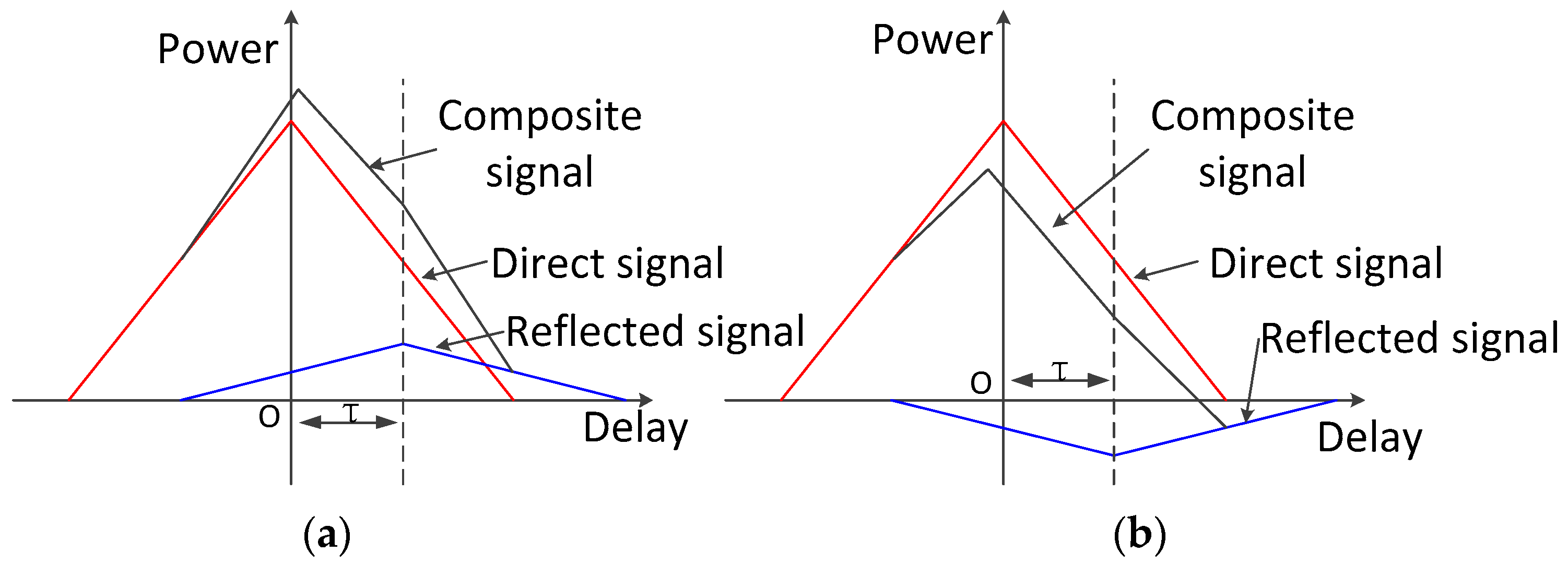
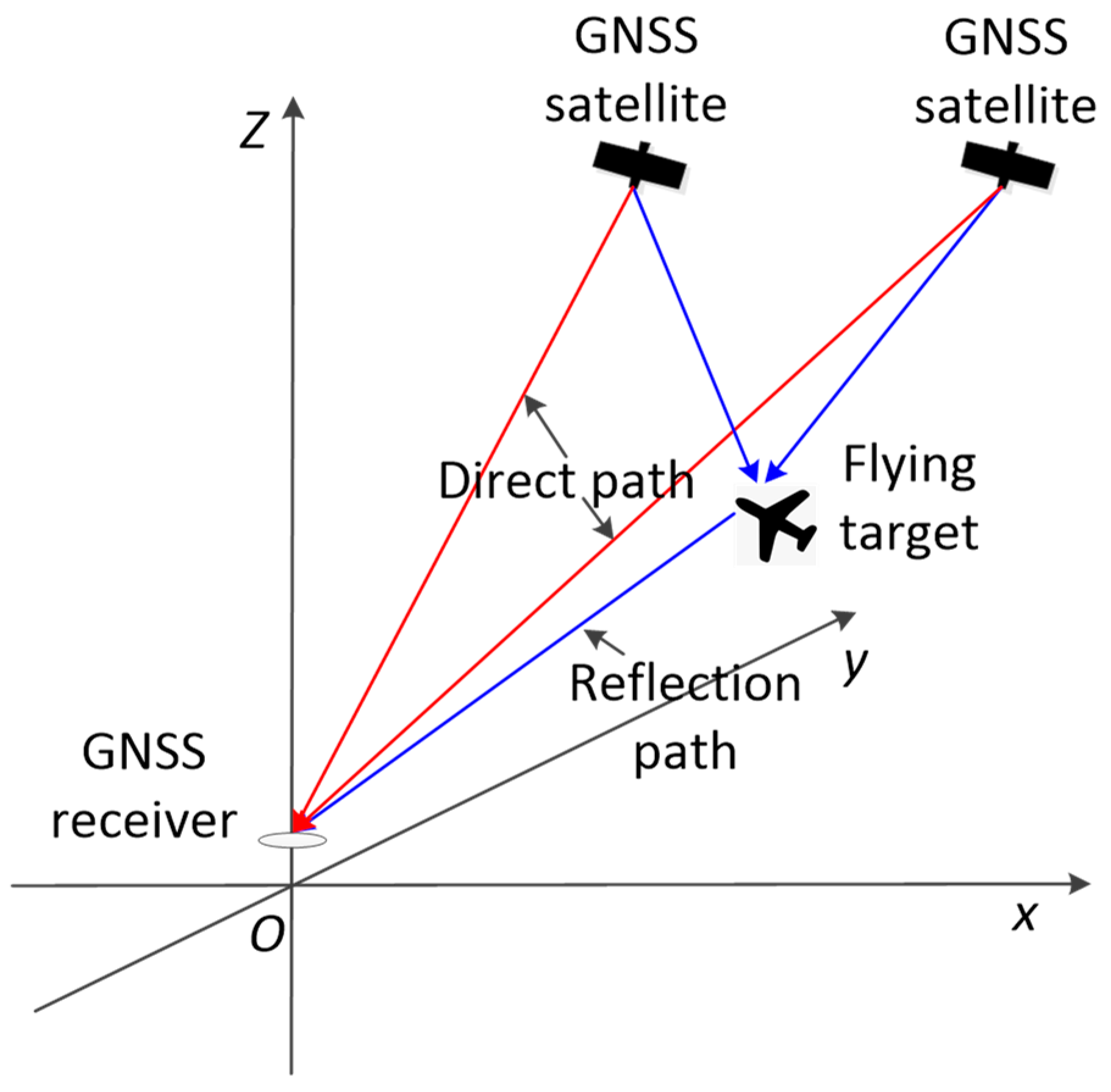
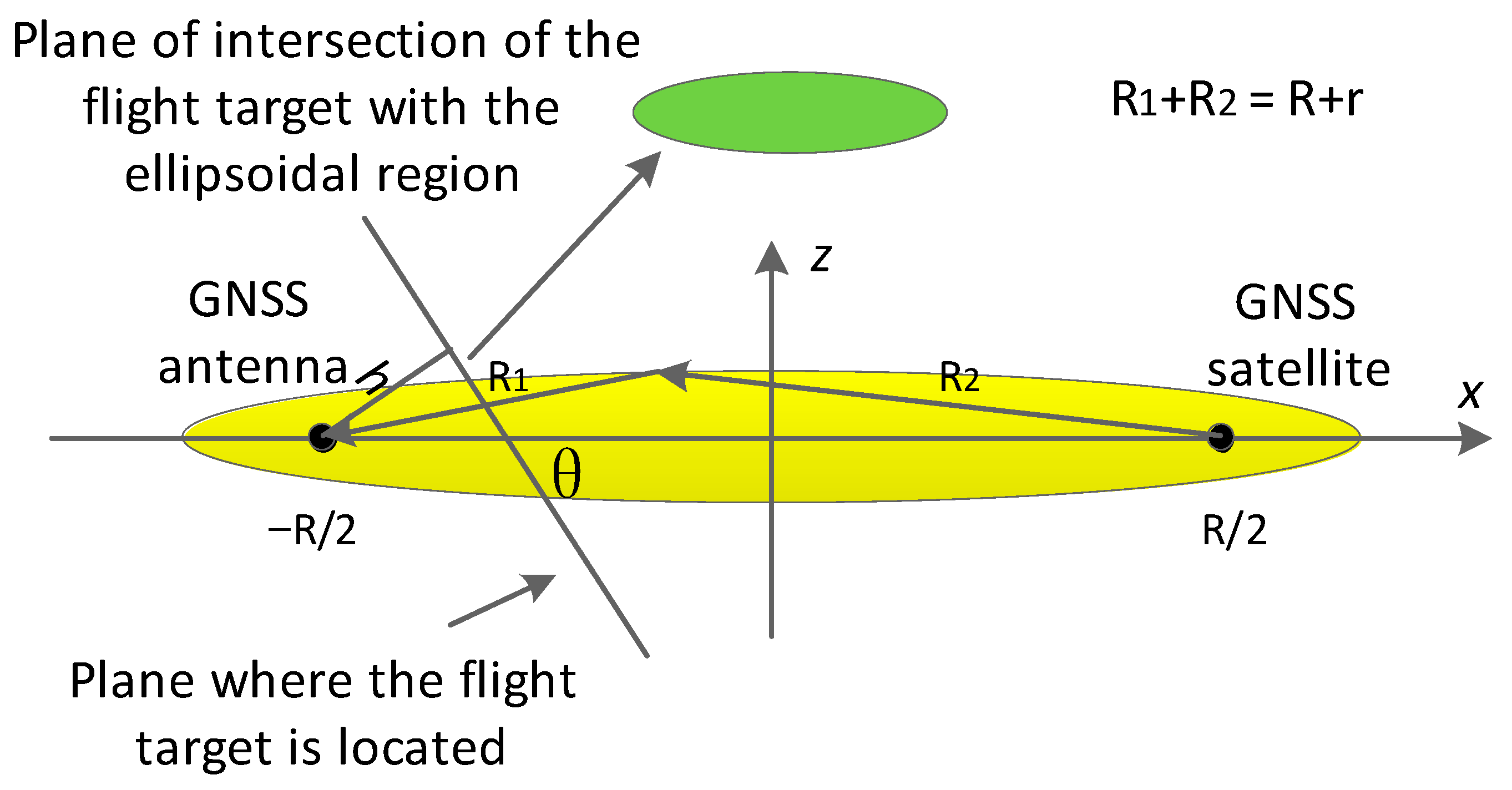




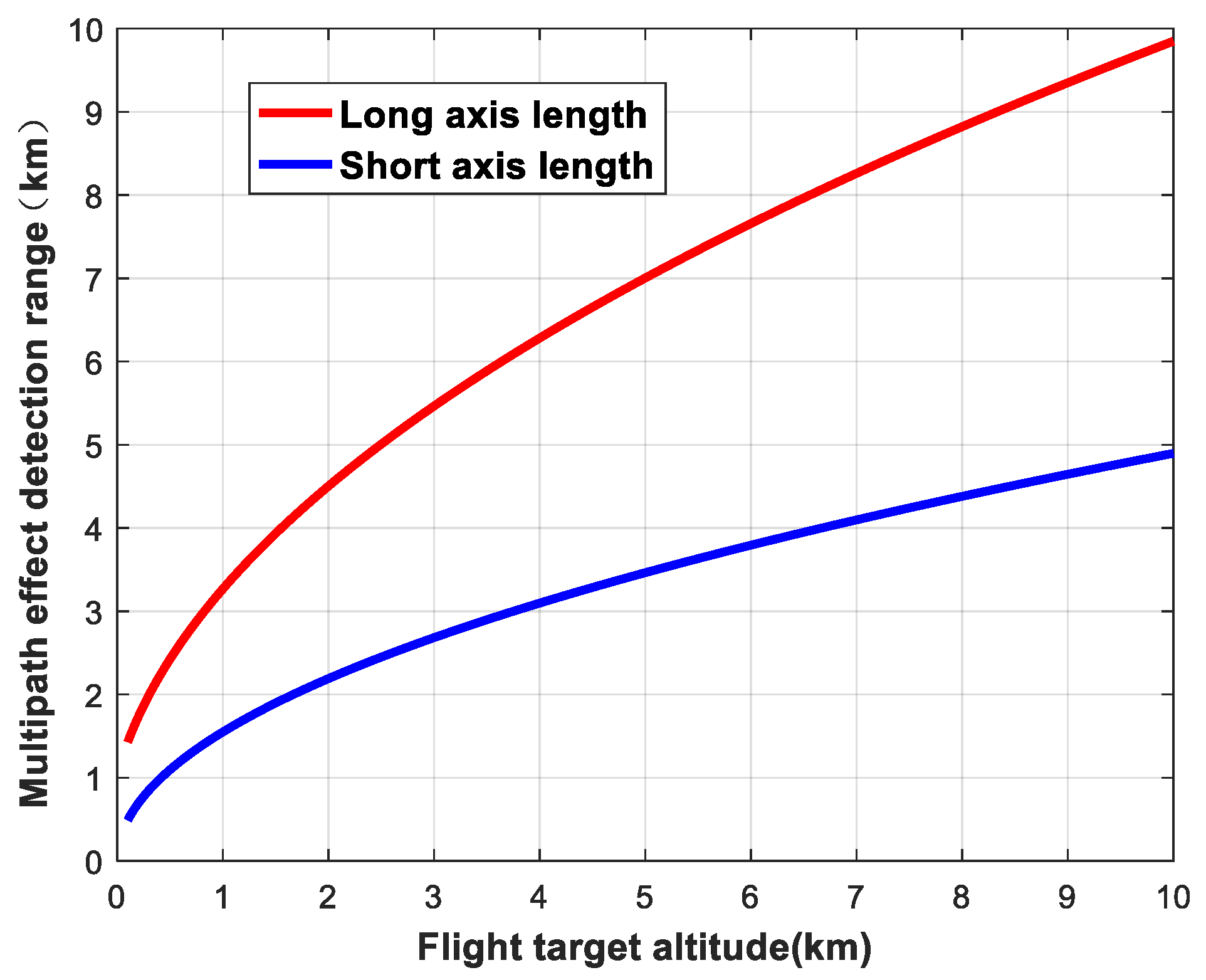

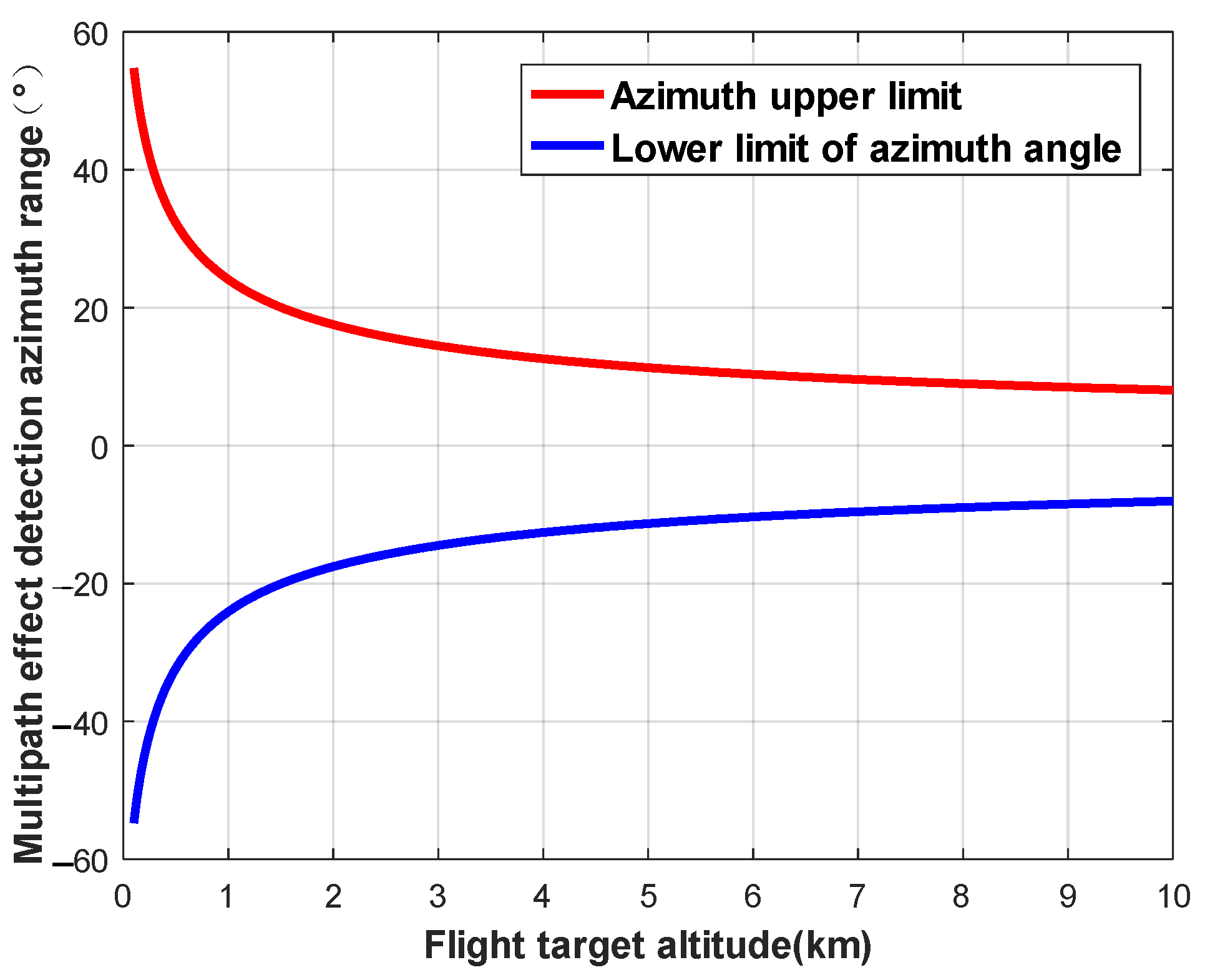


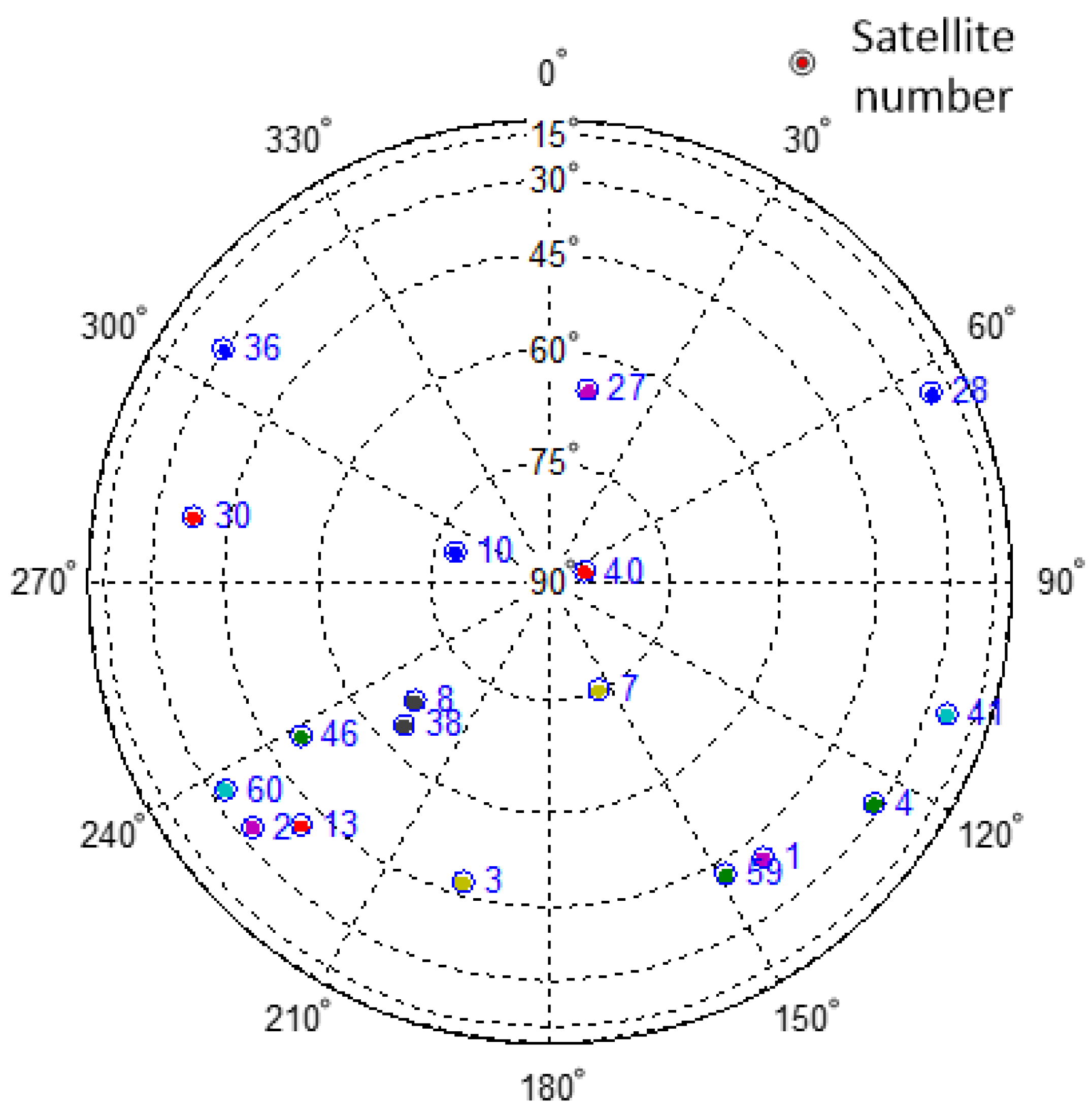
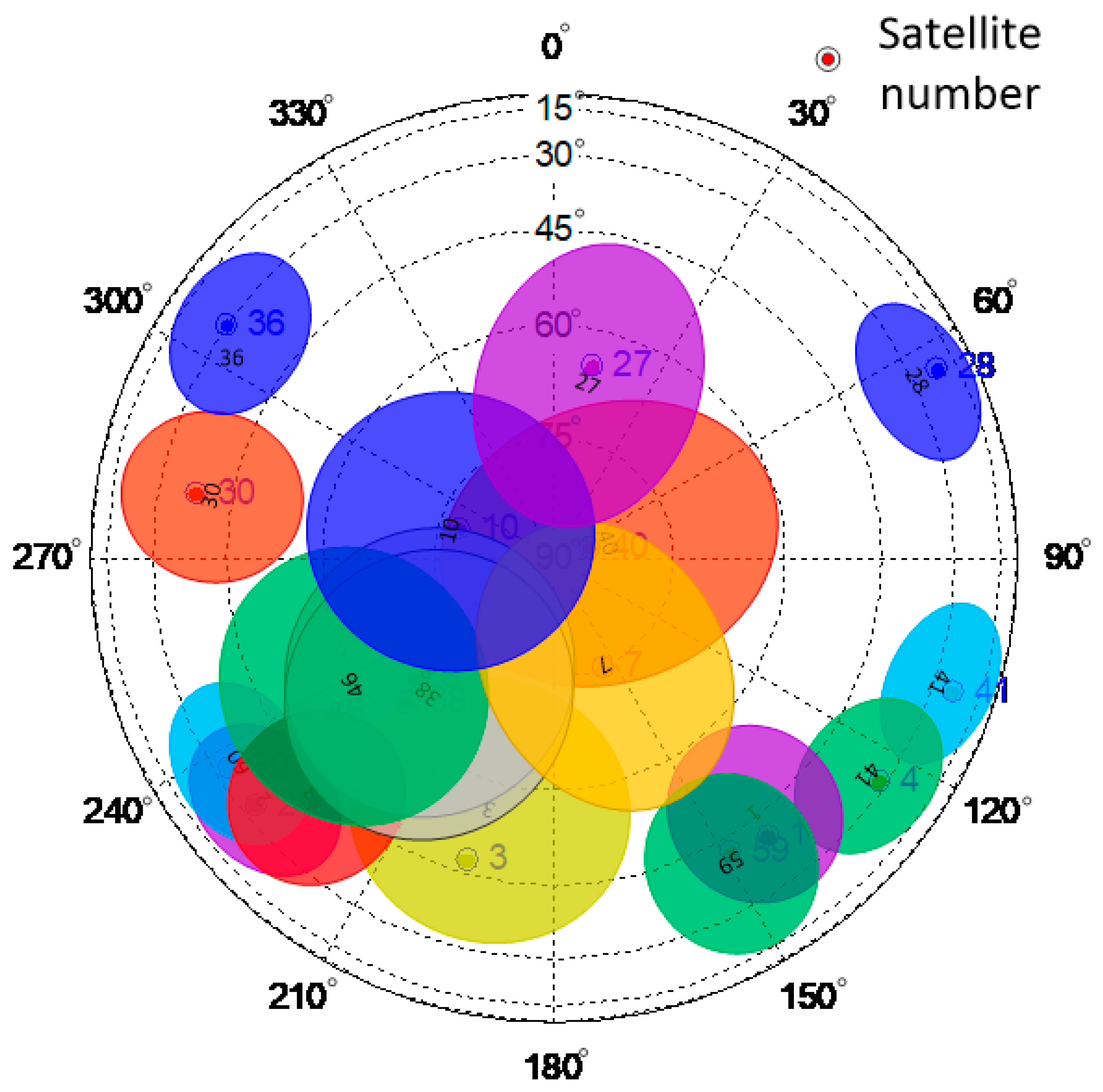


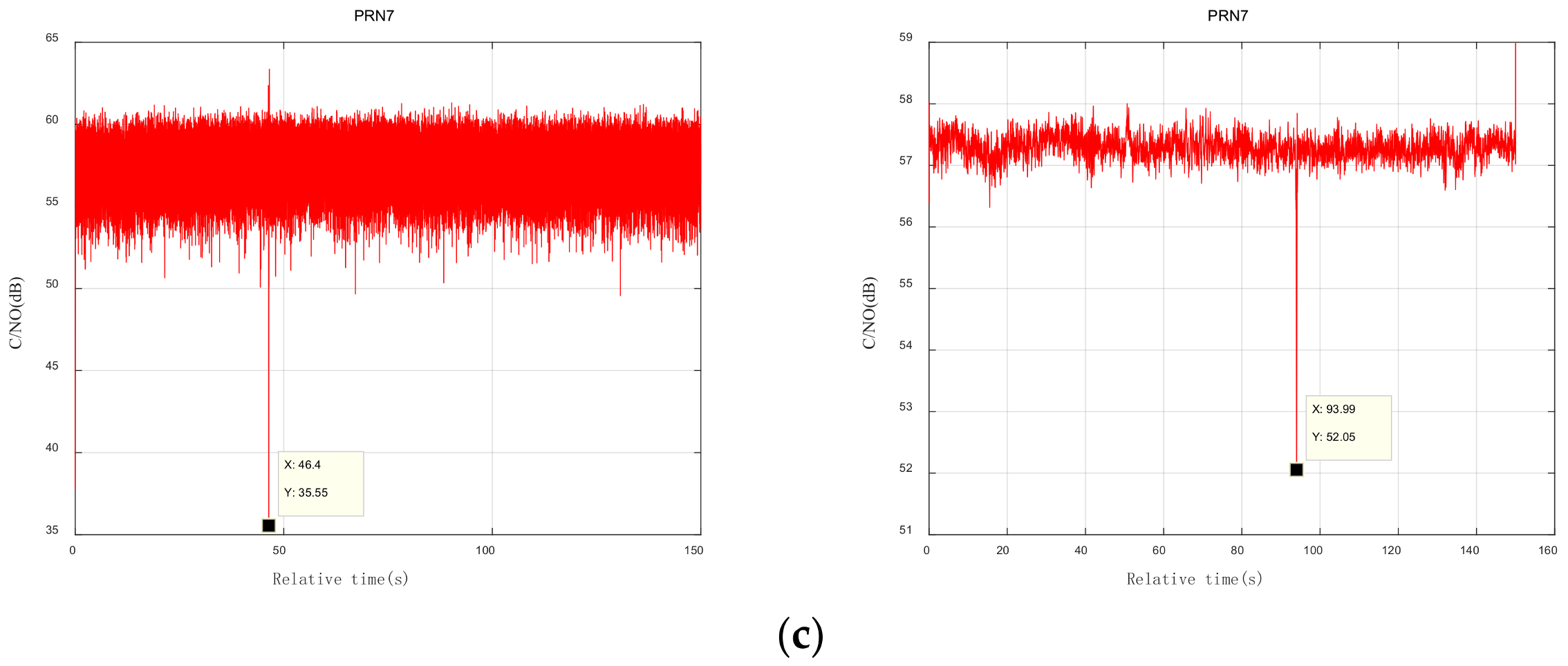
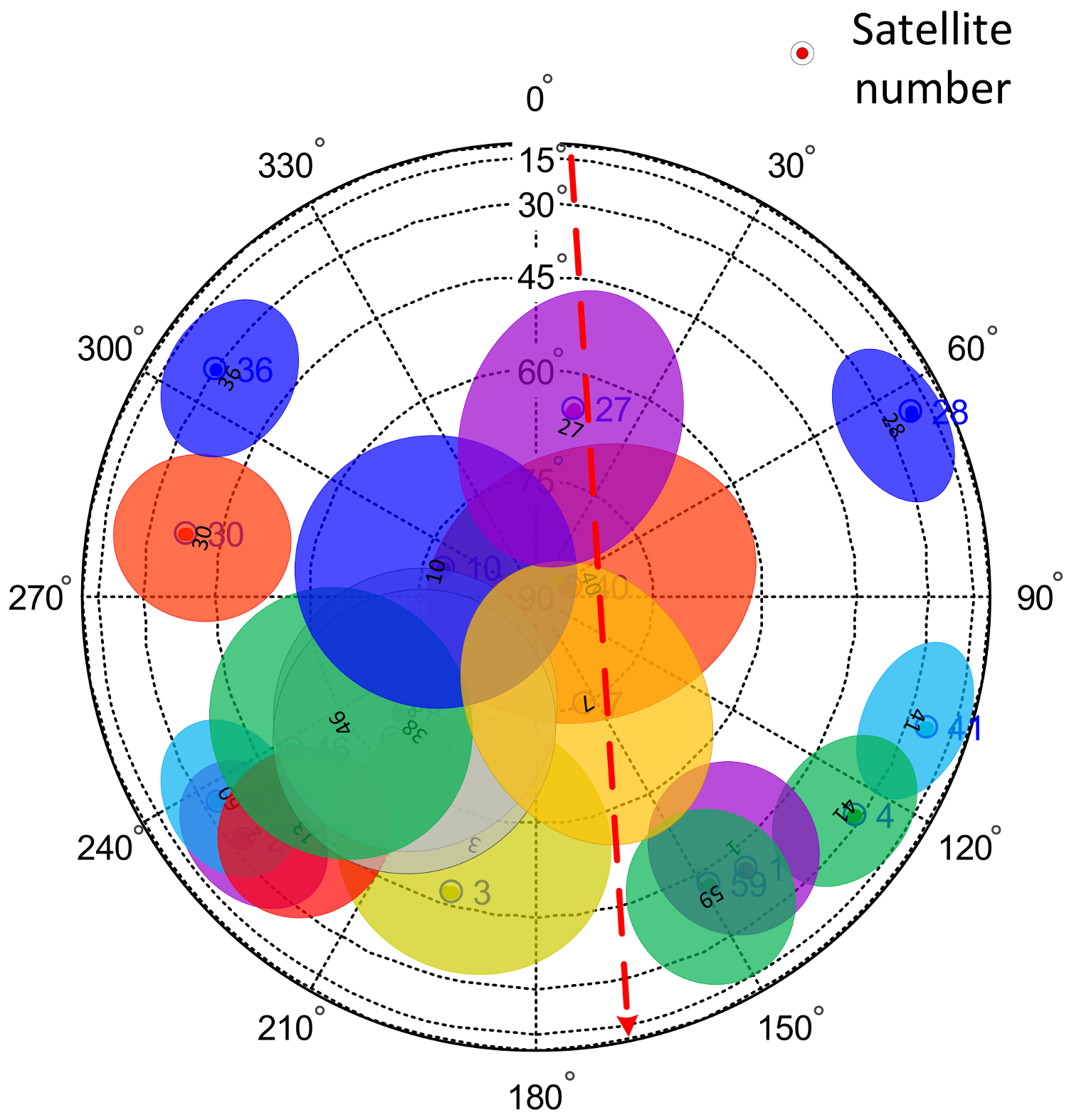
| Num. | Device | Quantity |
|---|---|---|
| 1 | GNSS receiver antenna | 1 |
| 2 | Antenna bracket | 1 |
| 3 | RF cable | 1 |
| 4 | Video capture equipment | 1 |
| 5 | IF signal collector | 1 |
| 6 | Data storage hard drive | 1 |
| 7 | Data processing terminal | 1 |
| Num. | Event | Absolute Time | Relative Time (s) |
|---|---|---|---|
| 1 | Start Collection | 10:14:00 | 0 |
| 2 | Target Appearance | 10:14:41 | 41 |
| 3 | Target Over Top | 10:14:51 | 51 |
| 4 | Target Leaving | 10:15:12 | 72 |
| 5 | Stop Collection | 10:16:30 | 150 |
| 6 | Start Collection | 10:16:30 | 0 |
| 7 | Target Appearance | 10:17:59 | 89 |
| 8 | Target Over Top | 10:18:08 | 98 |
| 9 | Target Leaving | 10:18:27 | 117 |
| 10 | Stop Collection | 10:19:00 | 150 |
Disclaimer/Publisher’s Note: The statements, opinions and data contained in all publications are solely those of the individual author(s) and contributor(s) and not of MDPI and/or the editor(s). MDPI and/or the editor(s) disclaim responsibility for any injury to people or property resulting from any ideas, methods, instructions or products referred to in the content. |
© 2024 by the authors. Licensee MDPI, Basel, Switzerland. This article is an open access article distributed under the terms and conditions of the Creative Commons Attribution (CC BY) license (https://creativecommons.org/licenses/by/4.0/).
Share and Cite
Zhu, P.; Zhu, Q.; Dong, X.; Sun, M. Flying Target Detection Technology Based on GNSS Multipath Signals. Sensors 2024, 24, 1706. https://doi.org/10.3390/s24051706
Zhu P, Zhu Q, Dong X, Sun M. Flying Target Detection Technology Based on GNSS Multipath Signals. Sensors. 2024; 24(5):1706. https://doi.org/10.3390/s24051706
Chicago/Turabian StyleZhu, Pengfei, Qinglin Zhu, Xiang Dong, and Mingchen Sun. 2024. "Flying Target Detection Technology Based on GNSS Multipath Signals" Sensors 24, no. 5: 1706. https://doi.org/10.3390/s24051706






